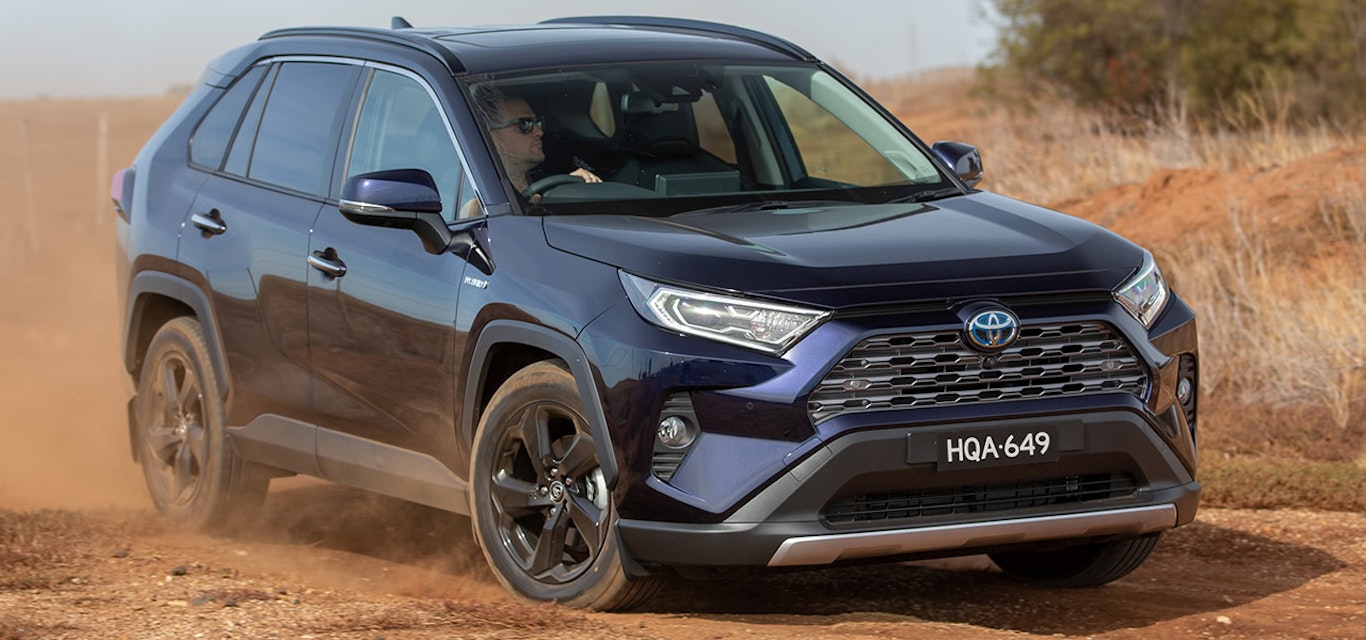First drives: Toyota RAV4
Hybridisation has now reached Toyota’s largest selling SUV, the RAV4.
Key points:
$45,400 drive away
Combined fuel consumption is 4.8L/100km
Class-leading safety
The rear provides 580L of space
Hybrid drivetrains are nothing new for Toyota. Prius was the ground breaker, later came the Camry and more recently the Corolla. Hybridisation has now reached Toyota’s largest selling SUV, the RAV4. And there’s not a diesel option in sight across the range.
Toyota supplied the mid-range AWD GXL Hybrid for our test. The hybrid drivetrain combines a 2.5L petrol engine and electric motor/generator, linked to a Continuously Variable Transmission (CVT). The CVT drives the front wheels, while an additional rear electric motor/generator provides power to the rear wheels. Depending on the drive mode, up to 80% of the total drive torque can be delivered through the rear wheels. The hybrid drivetrain in the AWD delivers a combined 163kW of power. The automatic CVT works seamlessly until a decent hill, where you’ll experience engine flare until things level out. The official combined fuel consumption is 4.8L/100km. The best I saw was 6.2L/100km, which is commendable given I spent a lot of time in the city.
The new RAV4 offers class-leading safety with the Toyota Safety Sense suite. It includes active cruise control; pre-collision safety system with autonomous emergency braking, day/night pedestrian and day cyclist detection; lane trace assist with steering assist and lane centring function; lane departure alert; road-sign assist (speed sign only); and auto high beam. I found the steering assist functionality quite firm. It provided intervention regularly, which for me detracted from the driving experience.
The latest RAV4 is slightly shorter, lower and wider than the previous model, but has a longer wheelbase. Built on the latest Toyota New Global Architecture platform, interior space has expanded significantly. The distance between the driver and front passenger has increased by 40mm and the rear footwell has increased by 49mm. The rear luggage space is 65mm longer and 50mm wider, providing 580L of space, which is now class-leading. A space-saver spare is standard, allowing a double-level floor in the cargo area. Ticking the full-size spare box eliminates this functionality, but you have the peace of mind of a proper spare tyre. For those taking this soft-roader off the bitumen, ground clearance has increased to 195mm for petrol variants and 190mm for the hybrid.
The GXL is well equipped with dual-zone climate control, rear air vents, front 12V DC, rear 120V AC accessory power sockets and four fast charging USB power ports. Six-speaker audio, wireless phone charging, keyless entry and start are also standard. For me, the biggest let-down was the audio/infotainment system. The 8.0” touchscreen responds well to touch and includes navigation as standard, but the overall operation was underwhelming. I didn’t think the functionality was all that intuitive. Apple CarPlay and Android Auto were missing, but will be included in vehicles built later this year. Anything sold earlier will receive a software upgrade on request.
The fifth generation RAV4 is a step-up from the previous model in every area.
The hybrid drivetrain sets it apart, as most competitors will have a diesel option. It was great using EV mode in the city and quietly working through traffic congestion with little to no emissions or noise. Out in the country, the RAV4’s road manners were well adjusted and potholes were consumed without fuss. The CVT engine flares on hills don’t inspire me, but that’s how they operate, and most people won’t really notice.
The Toyota RAV4 GXL AWD Hybrid will cost you around $45,400 drive away, but you might have to be patient as there is a waitlist of up to nine months for delivery at the moment.
